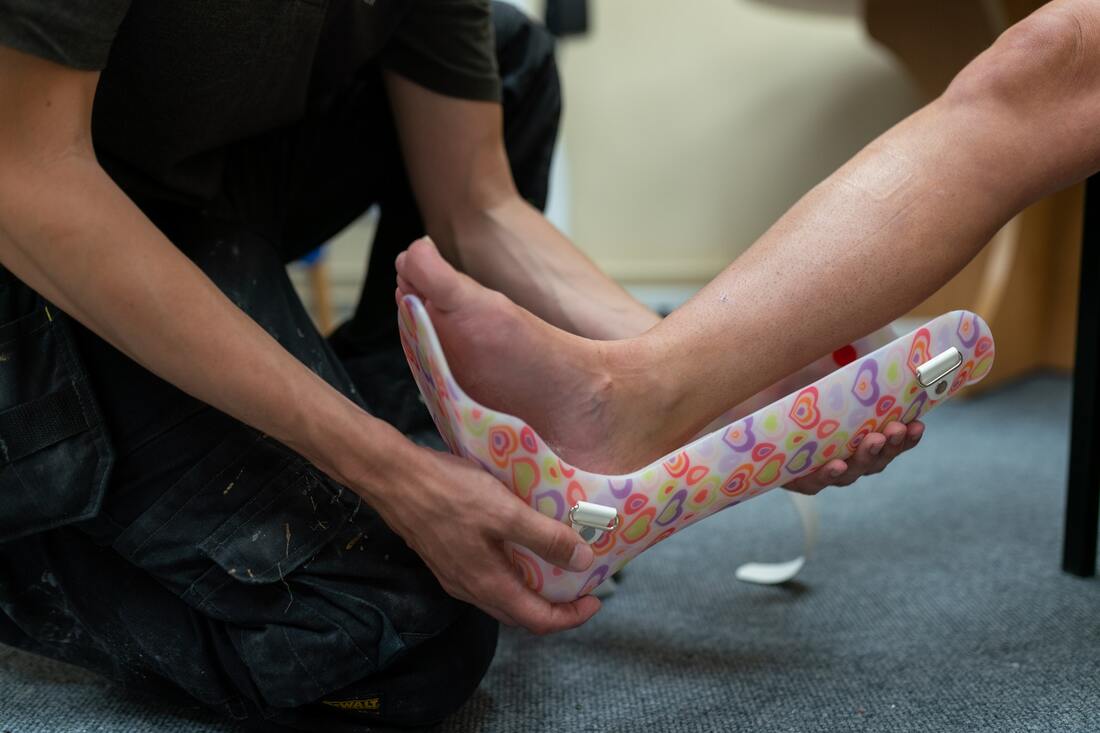If you are considering ankle surgery, then it is important that you understand how long the recovery time will be. There are many different opinions on ankle surgery recovery times; however, these opinions can't all be correct. Knowing how long the recovery from ankle surgery can help you prepare your family or loved ones for what is coming next.
This blog post will tell you about how long is the recovery from ankle surgery so that you are prepared! We will provide some of the most reliable information on ankle surgery recovery times to help make your recovery time easier and more manageable.
What is the Ankle Surgery Recovery Time?
Recovery times can vary between different people but most people are able to resume normal activities between three to six months, depending on the severity of their injury. Meanwhile, it's important to continue with any physical therapy exercises recommended by your surgeon so that you don't develop scar tissue which may slow down recovery and cause re-injury. If possible, try not to strain yourself too much during recovery as this may impact how quickly bones heal together again. It may be a good idea to purchase crutches during recovery as it will help you avoid putting too much weight on your foot.
As always, if you have any questions or concerns about recovery times with ankle surgery, speak to your doctor who is most qualified to discuss the best recovery plan for your specific case and injury.
What to Expect after Ankle Surgery?
After surgery, you will be placed in a cast or splint. You may also have an ankle brace to stabilize the joint while it heals. Most patients stay with the large boot for about 12 weeks and then transition into another brace. This prevents them from re-injury until they are fully healed.
Depending on what type of procedure is done, your surgeon will let you know what kind of restrictions there will be during recovery time. For example: if the hardware was used (i.e., screws), you might not get full motion back immediately. Instead, you would need some assistance from crutches or a walker before full weight-bearing ability returns. This could take several months after surgery depending on how much you were able to bend and straighten your foot before surgery.
If no hardware was used (i.e., stitches) then the full weight-bearing ability should return within a week or two after surgery depending on what type of activity level you had pre-surgery. Most patients can start putting some pressure through their heel by three weeks post-op but will need to be cautious that it is not too soon. Because it could lead to re-injury if done without proper strength and stabilization first from therapy exercises!
Patients need to know that the first thing they will feel is a pain in their foot or lower leg when walking around on crutches or a boot cast. They also will likely experience some swelling, bruising, stiffness, and tightness in the area where they had surgery done. It usually takes about six weeks until it feels like there's no more lingering discomfort postoperatively with physical therapy exercises which may include ice massaging too. If your doctor prescribed medications then take those as instructed. And what about returning to work? Most people are back on the job within two weeks of surgery unless there is some sort of physical labor involved.
Things you need after a Foot Surgery
- Pain Medication:
Pain after ankle surgery is common. You can consider taking a low dosage of over-the-counter medication such as Tylenol or Advil, but make sure to ask the doctor if it is safe for you. Also, remember that many hospitals will give patients narcotic prescriptions (such as Vicodin) which must be filed within 72 hours after leaving the hospital; otherwise, they become invalid.
- Crutches:
Make sure to take all the time you need to get used to your crutches before trying other methods such as canes or no assistance at all. Practice walking up and down stairs while using them so that when it comes time for physical therapy (if needed) you will be able to do this easily.
- Waterproof Cast Covers:
Even though many foot surgeries usually mean wearing a splint instead of a cast, it is still important to keep your foot covered and protected. If you have a waterproof cast cover, this should be used at all times when taking showers or baths to prevent the bandage underneath from getting wet.
- Shower Shoes:
You may not need these right away, but once you start walking around then having something on your feet that will protect against slipping in the shower becomes important.
- Drain Protector:
The drain protector is a small, plastic tube that you will need to place in your incision site. It catches blood and other fluids while they are draining from the wound so that it doesn't get all over everything. You can put a clean sock around this tool if it becomes dirty from drainage during use.
- Pillows:
Depending upon the level of surgery performed and where it was done, you may be lying in bed for a couple of weeks or more. Having extra pillows makes it easier to sit up and read books, watch TV, etc.
- Bedpan/Urinal bottle:
Even though most hospitals will provide one of these items during recovery at home after foot surgery (or other types), make sure that you have an adequate supply available before leaving the hospital so that you can get used to it.
- Pain Nutrition:
Even though you may be in pain, it is important that you continue to eat healthy and nutritious foods during the recovery process. The best advice here is to talk with a nutritionist before surgery so that they can provide tips about what foods are better than others when trying to avoid reflux-type symptoms while recovering from foot surgery.
- Cast Protector Socks:
These socks have a protective barrier over them to keep the cast/splint dry when in use. They can be worn under regular socks, so it's ok if you don't have any with you during recovery. The best advice here is not to go overboard on the numbers needed since they are quite heavy when filled with liquid. Just make sure to have one or two handy.
- Padded Shoe Liners:
Even though wearing shoes may feel fine initially after surgery, there will come a time where your foot begins to swell. This is where you should use padded inserts for additional comfort.
Ankle Exercises after Surgery
Exercises are an important part of ankle surgery recovery, but they need to be done carefully in order not to cause more damage. The exercise routine should start out slowly and gradually increase over time. It is also extremely important that you have your surgeon’s approval before starting any new exercise program after surgery. Even seemingly benign exercises can do harm if performed incorrectly. Here are some guidelines for a general exercise plan:
- First Stage (Days 0–14): Rest | You might feel a little stiff immediately following surgery, so rest as much as possible during this period. Avoid putting weight on your foot until it starts feeling better around day 14 post-op.
- Second Stage (Days 14–21): Small Exercises | During this next stage, you can start doing some physical therapy exercises like squeezing a ball or rubber band to get your ankle moving. Slowly return to walking and increase the amount of time spent standing with each day during this period. However, do not put weight on your foot until it starts feeling better around day 21 post-op.
- Third Stage (Weeks 20+): Full Recovery | Once you’re into week 20+ post-surgery, then you should be able to resume a normal exercise routine as long as there is no pain involved in your recovery process. If anything hurts while doing these exercises, stop immediately and consult with a doctor before resuming again.
Conclusion
Ankle surgery recovery is a long and difficult process. The biggest factor in the speed of recovery is how well the patient follows their surgeon’s directions post-surgery. Everyone heals differently, so there is no guarantee as to when you will be back on your feet again. However, if you do everything that you are told by your doctor (and staying positive is a must), ankle surgery recovery would go smoothly for you.
Our mission is to help you recover and get back to life as quickly as possible. Reboundwear’s adaptive clothing line is particularly designed to help those recovering from ankle surgery. If you are an active adult and getting back quickly is important to you, we have got the best adaptive wear waiting for you.





Leave a comment
All comments are moderated before being published.
This site is protected by hCaptcha and the hCaptcha Privacy Policy and Terms of Service apply.